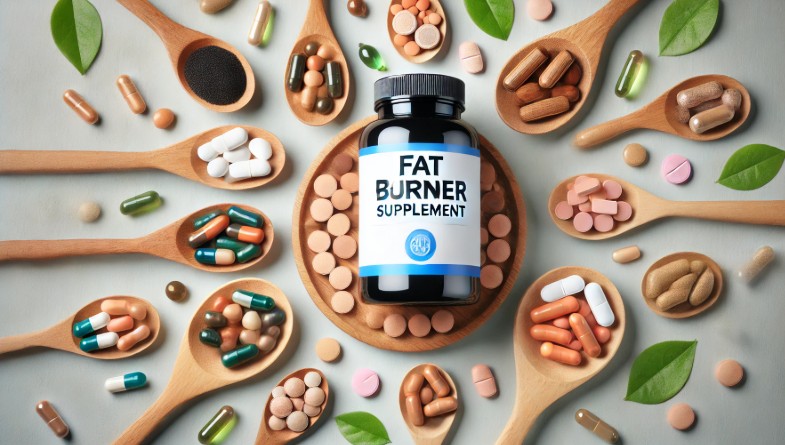:max_bytes(150000):strip_icc()/fish-oil-GettyImages-1368245736-89b6c55ee7b24827b41281b0cd9e51f9.jpg)
Arthritis refers to the swelling in one or more joints. The main symptoms of arthritis are joint pain and stiffness. Additional symptoms might include tenderness, redness, and decreased range of motion. Treatment for arthritis will depend on the arthritis type and aims to reduce pain, improve quality of life, and prevent joint damage.
Arthritis conditions can affect different joints in the body. Osteoarthritis (OA) and rheumatoid arthritis (RA) are the most common types. The most commonly affected joints in OA are the weight-bearing joints (i.e., knees, hips, and feet). RA mainly affects the joints of the hands, wrists, and knees.
Aleksandr Zubkov / Getty Images
For noninflammatory arthritis, like OA (which occurs with age), you can get pain relief with over-the-counter (OTC) medicines, exercise, rest, and heat and cold therapies.
Inflammatory arthritis conditions like RA, which occur when the immune system malfunctions and attacks healthy tissues, require prescription treatment. Such treatments include disease-modifying antirheumatic drugs (DMARDs), biologics, OTC pain relievers, exercise, hot and cold therapies, and other natural or nonmedicinal options.
You will work with a healthcare provider to determine what pain relief options might best manage your pain based on your arthritis type and unique health situation.
The article will cover arthritis pain relief options, including physical activity, heat and ice therapy, OTC and prescription pain relief medicines, complementary remedies, and more.
Physical Activity
Physical activity is a great way to manage and reduce arthritis pain. It can also help improve joint function.
The Centers for Disease Control and Prevention (CDC) recommends 150 minutes of moderate exercise per week for people with arthritis. This can include low-impact physical activities, such as walking, biking, swimming, and water activities that might ease arthritis pain and are safe for most adults.
Physical therapy is also helpful for managing symptoms, increasing your mobility, and improving your function. A physical therapist can teach you specific exercises to help you move easier and with less pain.
Heat, Ice, or Both
Both heat and ice can manage your arthritis symptoms. Heat can increase blood flow to promote joint, muscle, and tissue healing and ease aches and stiffness. In contrast, cold can help ease pain and swelling.
Heat treatments for arthritis pain can include warm showers or baths to ease stiffness and soreness. An electric blanket or heating pain can reduce aches and pain and ease discomfort so you can sleep better at night.
Ice treatment options for arthritis pain include gel ice packs or a bag of frozen vegetables wrapped in a towel. Apply the ice to painful joints.
Over-the-Counter Arthritis Medication
You have many different OTC options for arthritis pain and discomfort. These can help manage arthritis, especially in its early stages, and include oral medicines and topical pain relievers (lotions, creams, patches, etc.) that can be applied directly to the skin above the affected joint.
Oral Medicines
According to the American College of Rheumatology and the Arthritis Foundation, nonsteroidal anti-inflammatory drugs (NSAIDs) are one of the most effective OTC remedies for managing OA pain. They can also help manage inflammatory arthritis by reducing pain and inflammation.
Advil (ibuprofen) and Aleve (naproxen) can be purchased without a prescription and work by reducing the body’s production of prostaglandins—hormonelike substances that, in response to injury or illness, lead to inflammation, swelling, and pain.
But these drugs have side effects, mainly when used in high doses for long periods. Side effects include ulcers, gastrointestinal bleeding, reduced clotting, kidney function troubles, and allergic reactions.
Tylenol (acetaminophen) is another OTC pain-relief medication to manage arthritis. It works by reducing how the brain perceives pain. It does not decrease inflammation but can be an option for people who cannot use NSAIDs.
Acetaminophen can cause side effects, including skin reactions and liver damage, if taken in large doses over prolonged periods or when used with too much alcohol.
Topical Pain Relievers
Topical pain relievers are applied directly to the skin to dull joint pain. They can sometimes make skin feel hot or cold. Because they do not affect the whole body, they have fewer side effects than oral pain relievers.
Your OTC topical pain relief options include:
- Capsaicin, a substance found in chili peppers, is an ingredient in some topical pain relief lotions and creams. Capsaicin can provide warmth to soothe affected joints and is available for purchase OTC without a prescription.
- Counterirritants or pain relief topicals can contain menthol, eucalyptus, camphor, or wintergreen.
- Lidocaine is a topical numbing agent that interrupts the brain’s pain signals.
- Salicylates are chemically similar to aspirin and have a mild anti-inflammatory effect.
- Voltaren (diclofenac) can ease joint pain in the knees, ankles, feet, elbows, wrists, and hands.
Follow Directions
Read the product labeling for OTC pain relievers carefully and measure doses according to those directions.
A healthcare provider can also prescribe stronger versions of available OTC topicals if needed to manage your joint pain.
Pain Relief Without NSAIDs
Pain and inflammation can be managed using NSAIDs. But these medicines, especially when taken in high doses and for long periods, can eventually lead to liver and kidney problems, heart attacks, strokes, gastrointestinal bleeding, ulcers, and other serious health issues. Alternative therapies, including topical pain relievers, complementary remedies, herbs, and supplements, can help you avoid these risks.
Complementary Arthritis Remedies
Complementary arthritis remedies are healthcare practices that are not part of traditional medicine. Many of these have evidence and safety studies behind them and are sometimes combined with conventional therapies.
Acupuncture
This ancient Chinese medical practice uses thin needles inserted at specific points in the body. Research shows it offers short-term relief for people with arthritis. While there is little evidence of its long-term benefits, the risk of harm with acupuncture is low.
Omega-3 Fatty acids
Omega-3 fatty acids are known for reducing inflammation, and an increased intake of omega-3 fatty acids might reduce your pain and stiffness. They may even protect your joints from damage. The most common sources of omega-3 fatty acids are fish oil and flaxseed. You can get your omega-3 fatty acids from your diet or supplements.
Herbal and Dietary Supplements
Some herbal or dietary supplements might reduce joint pain, but there is not enough research evidence on which supplements best treat arthritis pain or inflammation.
Herbal and dietary supplement options that might reduce arthritis pain include:
Safety Note
The Food and Drug Administration (FDA) does not monitor herbal and dietary supplements for quality and safety, so buying your supplements from a reputable source is important. Talk to your healthcare provider before you try a new supplement, as some can cause serious side effects or adverse drug reactions.
Massage
The research on massage shows some evidence that massage is superior to nonactive therapies for reducing pain and improving function. Your options for massage include going to a day spa, getting a massage as part of physical therapy, and using handheld devices or massage chairs.
Mindfulness and Relaxation Therapy
Research on mindfulness meditation, biofeedback, and relaxation training shows these therapies can improve function and offer higher pain tolerance in people with arthritis. These therapies are designed to bring about relaxation or mindful responses, resulting in a reduced negative response, slower breathing, reduced heart rate, and lower blood pressure, which is the opposite of a stress response.
You can learn about mindfulness meditation, biofeedback, or relaxation techniques through educational videos and websites or from a mental health professional.
Mental Health and Arthritis Pain
The symptoms of anxiety and depression are common in American adults with arthritis, says the CDC. These symptoms can lead to reduced treatment responses and a poor quality of life. But improving your mental health and treating mood disorders might lead to less joint pain.
Let your healthcare provider know if you experience symptoms of anxiety or depression or seek out treatment or referrals to therapists or other mental health services.
Tai Chi
Tai chi is rooted in traditional Chinese medicine and uses movements and positions to slow down the body and mind. Some studies have found it to help reduce pain and stiffness and improve physical function in people with arthritis. You can learn about tai chi by taking a class or locating educational videos online.
Yoga
Like tai chi, yoga is an ancient practice that brings together the mind and body through breathing exercises, meditation, and poses that encourage relaxation and stress reduction.
Regular yoga training has been found to help reduce arthritis symptoms, promote physical function, and improve general well-being. Studies have also found some benefits for reducing RA pain and inflammation.
Can CBD Help Arthritis Pain?
Cannabidiol (CBD) products, including CBD oil, might help relieve arthritis pain and inflammation, improve sleep, and reduce anxiety. CBD oil contains extracts from cannabis plants, and many people use it to manage chronic pain conditions. Unfortunately, there has been a lack of scientific evidence to date proving CBD can be an effective arthritis treatment for humans.
If you want CBD to manage your pain, being cautious and educating yourself on the risks is crucial. Inform your healthcare provider so they can monitor you and ensure you are not at risk for adverse drug interactions.
Prescription Arthritis Medication
Inflammatory arthritis conditions, like RA, psoriatic arthritis, and ankylosing spondylitis, are treated with prescription medicines. These include:
- Corticosteroids: These drugs, available as oral pills and injections, reduce inflammation by behaving in the same way that natural cortisol works. They work quickly and are given for short periods because of the risk of severe side effects with long-term use.
- DMARDs: Conventional DMARDs, like methotrexate and sulfasalazine, stop or slow down inflammation that leads to joint damage. A conventional DMARD drug is one of the first treatments you will get for inflammatory arthritis. Two other subsets of DMARDs are biologics and targeted synthetic DMARDs and can be combined with a conventional DMARD.
- Biologics: These potent drugs work well for many people with inflammatory arthritis. They are given as an injection you give yourself or by intravenous (IV) infusion. But they are expensive drugs and can make you more vulnerable to infections. Your healthcare provider will prescribe these medicines after carefully weighing the benefits and risks of such treatments.
- Targeted DMARDs: These medicines slow down arthritis disease processes by tapering down the overactive effects of the immune system. Targeted DMARDs are known as small-molecule DMARDs and are taken by mouth. Two targeted DMARDs are available for treating inflammatory arthritis: Janus kinase (JAK) inhibitors and phosphodiesterase 4 (PDE 4) inhibitors.
- Prescription pain relievers: If you are experiencing severe pain related to arthritis and treatments are not helping, your healthcare provider might prescribe an opioid medication. Some commonly prescribed opioids for arthritis pain are tramadol, codeine, oxycodone, and hydrocodone. These medicines should be taken cautiously because they pose risks of overdose and addiction.
Assistive Devices
Assistive devices can make tasks easier on your joints. These products keep joints in the best position for functioning so you can avoid injury and extend your range of motion without pain. Simple devices, such as jar openers, reachers, zipper pulls, and easy-grip utensils, are available to purchase online and can make your life with arthritis a lot easier.
If you have mobility troubles, a therapist, such as a physical therapist, occupational therapist, or orthotist, can recommend mobility devices and aids can help you determine what might best help you. Mobility devices and aids that can be helpful for people with arthritis include:
- Canes
- Crutches
- Walkers
- Knee braces
- Air splints
- Shoe inserts
- Orthopedic shoes
Arthritis Surgery
If arthritis leads to severe joint damage, you may need surgery to fix or replace damaged joints, reduce pain, and improve joint function.
Surgical options for people with arthritis include:
Surgery is considered when all other options for treating arthritis pain have failed or joints no longer work because they are too damaged.
Summary
The term “arthritis” covers a range of conditions that affect the joints and lead to pain and inflammation. Osteoarthritis and rheumatoid arthritis are two common types of arthritis.
If left untreated, arthritis can lead to joint damage and mobility and function troubles. Fortunately, you have plenty of pain relief options. Some are available over the counter as oral medicines and topical therapies. Others require a prescription and are available as pills, topical medicines, injections, and IV treatments.
Physical activity and physical therapy are safe and easy options to manage arthritis and reduce pain and stiffness. Your healthcare provider might also recommend natural options for managing pain, from ice and heat therapy to supplements and herbs, massage, acupuncture, mindful meditation, yoga, and more. It is also vital to protect your joints by using assistive devices and mobility aids.
Surgery might be considered for damaged joints, especially when all other therapies have failed.
Discuss all your treatment options with your healthcare provider. Talk to your healthcare provider before trying natural remedies because some of these may pose harm or affect how prescription treatments work.








